Anthurium: description, types, cultivation and reproduction
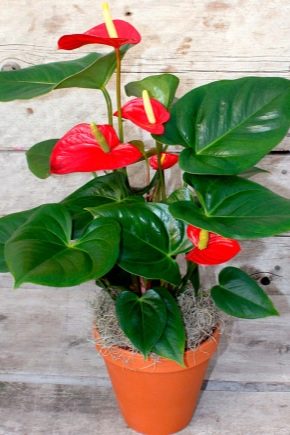
Anthurium is a bright exotic flower native to the American tropics. Its amazing shape and variety of species attracts indoor plant lovers. With its bright colors, it enhances the atmosphere and uplifts the mood. A tropical plant is unpretentious, but in order for it to bloom for a whole year, you need competent care.
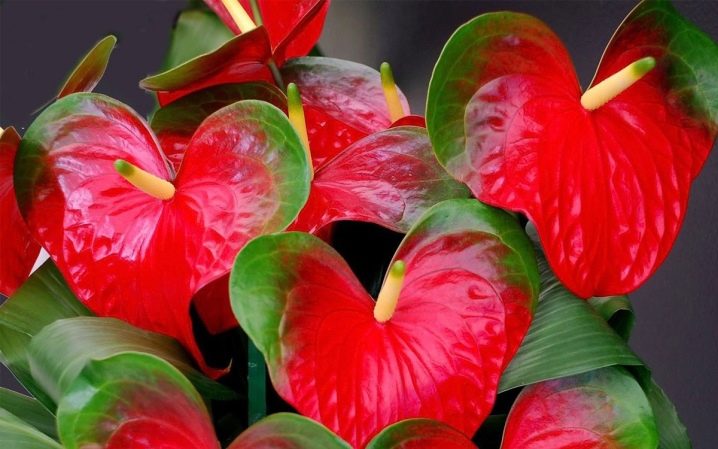
Description
Anthurium belongs to the herbaceous plants of the aroid family. The name is formed from two words of the ancient Greek language: tail and flower.
For its unusual appearance, unlike anything else, it is popularly called differently - the flower "male happiness". It is believed that anthurium is able to improve the physical health of men.
The native land of the plant is the tropics of South and Central America. Like any other representative of the rainforest, this flower is poisonous. Anthurium juice contains toxic substances that irritate the mucous membranes, so you need to handle it carefully.
There are many different species of this plant in nature. A flower growing on a tree trunk does not look like one living in crevices of rocks or next to an ant colony.
These exotic plants gained popularity due to their bright inflorescence, consisting of a tall cob, covered with small flowers, and a blanket, which many uninformed people take for a flower.
The last element is needed to attract insects for pollination.
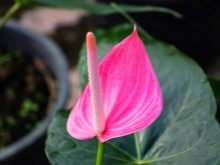
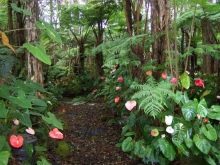
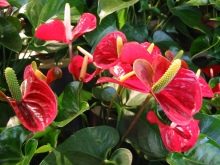
In the natural environment, the perianth and core take on different colors. They can be pale green, whitish, pinkish or bright red, yellow and orange. Home breeders have increased the number of shades.
Not many have seen the fruits of anthurium. These are dense, shiny berries containing one or two seeds inside. The internal structure is fleshy. They look pretty as they also come in different colors. Eating fruits is strictly prohibited due to their toxicity.
The geometric shape of the leaves varies depending on the variety. Heart-shaped or rounded is more common. Their structure is dense and rigid, the surface is covered with a glossy film on top. Leaf plates sit on strong petioles of sufficient length.
Reviews of the owners of anthurium vary greatly. Someone considers him capricious, others argue that caring for him does not give them a problem. Therefore, before starting this houseplant, you should first familiarize yourself with each point of view.

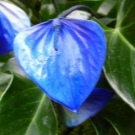

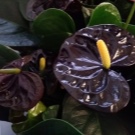
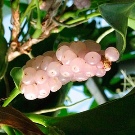
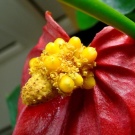
Varieties
More than 900 species of this plant are known, and each has its own characteristics and requirements.
Breeders classify indoor varieties into three main groups.
- Beautifully flowering. Flowers are used not only for growing in pots, but also cut to make bouquets. The most famous examples among them are the following.
- Andre mix. One of the most popular varieties, since it is quite unpretentious. Plants grow to a height of 70 to 90 cm, which is suitable for cutting. The beautiful glossy leaves are heart-shaped. The number of shades of the bracts also in the form of a heart pleases with their diversity, and the cob is usually yellow or white.
- "Scherzer". The low-growing variety is unique in that its ear is curved, and the bedspread is curved downward, which resembles the silhouette of a flamingo. There are orange, pink and red bracts.
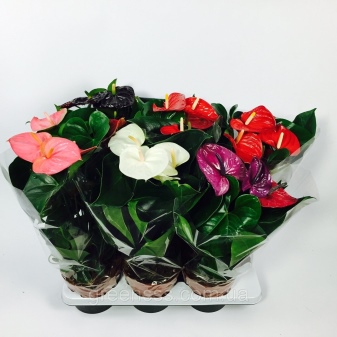
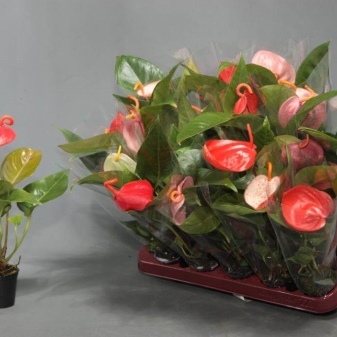
- With patterned leaves and climbing trunk.
- "Crystal". A very interesting houseplant with excellent decorative properties. It has large, velvety to the touch leaves of a dark green color, along which pale silvery veins pass, forming exquisite non-repeating patterns. It is for them that the variety is valued, since the flowers are small and inconspicuous. But the fruits ripen bright purple, giving the flower beauty.
- "Multi-cut". An amazing liana that looks like an open palm. Dark, narrow lanceolate divisions have wavy edges.
- "Majestic". In its shape and color it is similar to "Crystal", but in size it is much larger.

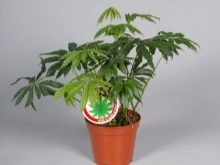
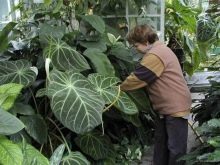
- Decorative deciduous... The plants are characterized by long drooping stems and rich green leaves.
- "Baker". The variety has a low stem and medium-sized oblong leaf plates. An interesting dark-colored ornament is on the reverse side, and on top they are ordinary with a yellowish border along the edge. Flowers are more often cream shades.
- "Climbing". The meter long curly stem allows you to grow this vine in large greenhouses. The plant has long, leathery leaves of a grassy green color. The bract is usually greenish. Interestingly, in this variety, flowers and berries can be present at the same time. Fruits are often white-purple.
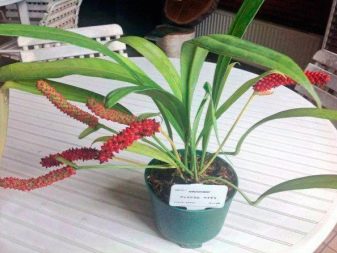
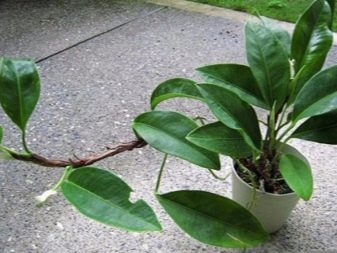
Each variety has its own care requirements. For example, some flowers exude a subtle pleasant aroma, while a variety like Otazu has a repulsive odor. Therefore, the choice of plant must be approached carefully.
Landing
The first question that arises after the acquisition of anthurium is whether it is necessary to transplant it.
Experts recommend not to do this right away, the plant should be quarantined for 2-3 weeks. The quarantine period is necessary for the flower to adapt.
As for the transplant, it is definitely needed. The fact is that when sold, anthurium is contained in peat soil, which is not suitable for constant presence in it.
The soil for planting must be specially prepared. Tropical plants naturally grow in loose and soft soil, so the usual one is not suitable for them. You can make the mixture yourself or buy a ready-made mixture for aroid plants. Suitable substrates for growing orchids. Gardeners recommend mixing woody humus with leafy soil and peat in equal proportions, adding half of the river sand. To increase the saturation of the soil with oxygen, the resulting mixture is mixed with moss.

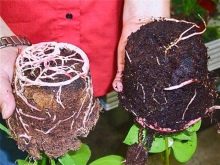
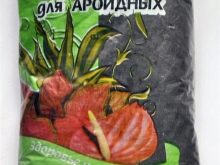
To eliminate the risk of decay of the root system, add charcoal. Excessive proportions should not be allowed. Make sure that the earth is slightly acidic.
Anthurium will have to be transplanted often, this should be taken into account when choosing a pot. The flower loves tightness, the roots must completely fill the entire volume of the container, only then will it bloom constantly. Choose a wider container only when you want to get baby sprouts.
Be sure to lay an expanded clay layer on the bottom of the pot as drainage. On top of it is soil. To compact the earth, it is lightly watered with water.
The transplant procedure is carried out by transshipment method. Since the roots are extremely fragile, it is only necessary to clean them of old soil if there are rotten parts. The plant should be removed from the old container carefully, holding it at the base of the stems. You can tap the walls to improve the process.
The flower is laid out in the center of a new container, deepening the root collar by a couple of centimeters, no more. The rest of the space is filled with fresh soil, compacting it with gentle shaking. The ground should not reach the edge of the pot by 2 cm, moss is subsequently laid in this space.
After the end of the procedure, the anthurium should be watered moderately. The water will compact the earth and soothe the flower after the stress.
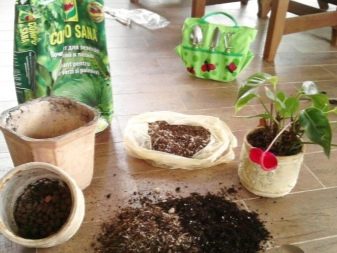
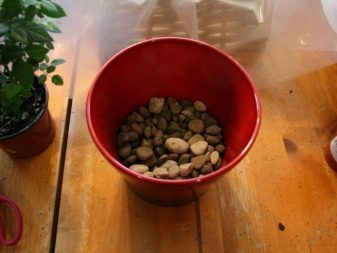

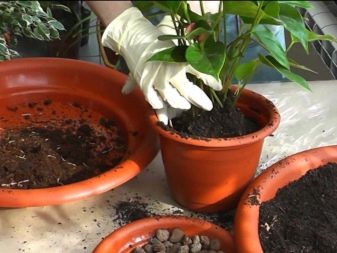
For the first 5 years, the seedling needs to be replanted annually, each time increasing the width of the pot by a couple of centimeters. From the age of six, you can reduce the number of transplants to once every three years.
Care
To grow anthurium at home, you need to understand that you will have to look after him carefully. Otherwise, for the sake of which it was acquired - flowering, it will not happen.
Since the flower is native to the tropics, it loves warmth. A comfortable temperature for him in the summer is 22-28 degrees. In winter, it is kept within 15-20. It is necessary to create a "winter sleep" for the plant, even if it is summer outside all year round. At this time, the kidneys are tied. As soon as they are laid, you can return to warmth again.
Direct sunlight is detrimental to anthurium, again due to the fact that it comes from tropical forests. It is better to grow it in diffused and dim light. Ultraviolet light will burn the leaves. It is more expedient to display containers on the east or north-west windows. If they are absent, choose a shady place a meter from the window. In winter, you can place the anthurium on a south-facing window. In addition, a phytolamp should be placed next to it, since the plant needs 12-hour daylight hours, and in winter there is not enough light.
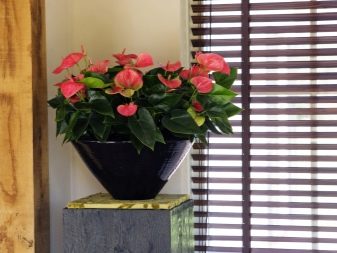
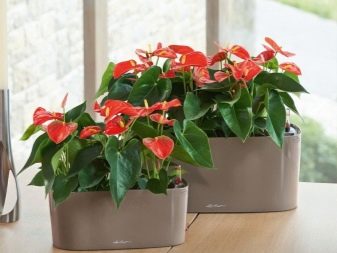
Experts warn that the flower is afraid of drafts, so if the frames are unreliable, then it is better not to put the pots on the windowsills.
The cultivation of tropical exotic plants is characterized by a certain level of humidity. It is necessary to monitor this indicator, avoiding excesses. Excessive moisture will cause rotting of the root system, dryness - death. It is better to put a container with a flower in a tray, into which wet pebbles are poured. Leaves are advised to slightly moisten from a spray bottle or wipe with a damp cloth. The room where tropical plants are located is equipped with an air humidifier, where the mode is set to 80%. You can simply put a bucket of water next to the pot, thus providing the necessary moisture.
The watering regime at home is as follows:
- in summer, no more than 2-3 times a week;
- weekly in winter.
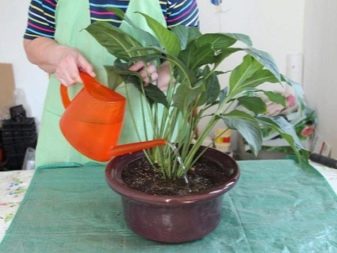
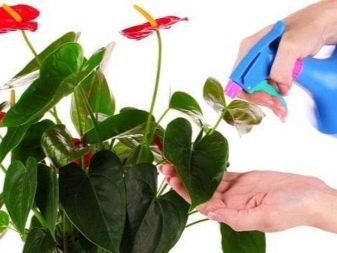
For the procedure, purified distilled water is used, since the liquid saturated with salts is very hard. If you take liquid from the water supply, then it must be defended. TWhen only the upper layers are used for watering, since the lower ones usually accumulate settled impurities. Citric acid is sometimes added to soften the water.
The flower needs to be fed with vitamins and fertilizers twice a year, then it will regularly delight its owners. The procedure is carried out in spring and summer. Fertilize it twice a month. In the spring vegetative period, the plant grows its greenery. We need to help him and feed him with products with a high nitrogen content. Starting in May, fertilizers saturated with phosphorus will be required. Additives are poured under the root, and then the soil is spilled with water.
Experts warn that after the purchase, the anthurium should not be touched for a couple of weeks. Arrange a quarantine for him so that he takes root and acclimatizes to new conditions.

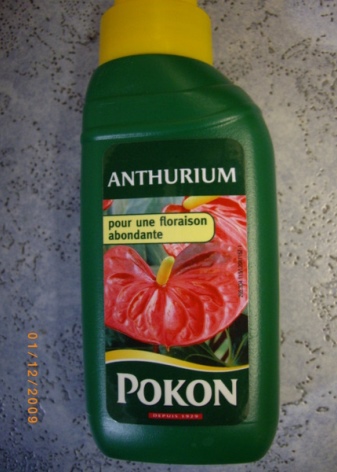
Flowering conditions
It should be noted that young shoots begin to bloom only at the age of two years. If you create favorable conditions for them, then this process will become year-round.
Basic rules to follow.
- Do not violate watering conditions. The water temperature should be room temperature, impurities in it are excluded. When settling, it is necessary to ensure that the liquid does not become rotten.
- To eliminate the risk of overdrying the soil, it is covered with moss.
- Never expose the pot to direct sunlight. Shade the window if there is a lot of light, or transfer the flower to partial shade 0.5-1 m from the windowsill.
- In winter, equip the place with additional lighting.
- Frequent transfer of a flower from place to place affects flowering.It is best to do this twice a year when fertilizing.
- When flowers appear, it is better to remove the container from a brightly lit area, providing it with diffused light.
- During the formation of inflorescences, increase watering, moisten the leaves in any way possible.
- Fertilize every two weeks to increase the flowering period.
- The covers of the faded sprouts are removed so as not to weaken the entire plant by laying seeds. Pay attention to the type of inflorescence, remove wilted flowers in a timely manner.
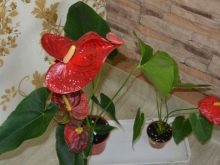
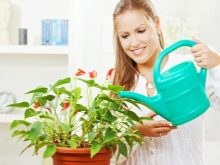
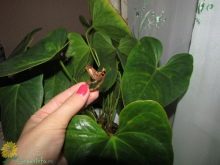
Pay attention to the type of inflorescence, remove wilted flowers in a timely manner.
Sometimes, when buying, anthurium blooms for a while, and then it seems to freeze, but time passes, and it still does not bloom. There are several issues with this behavior.
- If the plant was bought in bloom and after the quarantine period was not transplanted. The fact is that in nurseries, sprouts are planted in a peat substrate, oversaturated with chemicals for preservation. They make the anthurium bloom profusely and drain it. Therefore, after purchase, the plant must be transplanted.
- If you bought a young specimen that has never given flowers. The plant begins to bloom only at the age of two. To speed up the process, professionals use the following recipe. In December, a winter regime is created for the flower with a temperature not higher than 19 degrees. At the same time, 12-hour lighting and weekly watering should be organized. After 1.5-2 months, when young shoots appear on the stem, the anthurium is transferred to heat up to 25 degrees, and the number of watering is increased. If all the conditions are met, the flowers will not be long in coming.
- If the rules of leaving are violated. Do not allow the roots to dry out or rot. Exclude direct sunlight and drafts. If the room is cool all year round, the plant will not bloom. Compliance with the required soil composition is mandatory. It is impossible to oversaturate the soil with dressings, they should be in moderation.
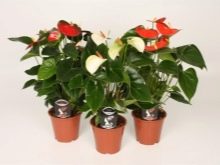
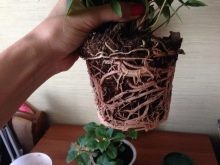
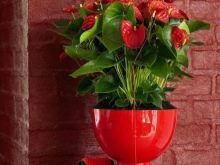
If pests or infection have appeared. A diseased plant does not bloom due to a lack of vitality. He must first be cured, and only then rehabilitated.
Pruning
Cutting off non-viable buds is necessary, as they interfere with flowering, taking away the strength from the plant. You will need a sharp knife to cut them. With its help, the bud is cut off at the base, and the cut is processed with charcoal powder.
A less drastic method can be used. You need to wait until the perianth is dry, and carefully tear it off.... The core will dry out and fall off on its own.
In the process of growth, the lower foliage dies off, the new one grows on top. The flower loses its attractiveness, acquiring an unkempt appearance. Therefore, its regular rejuvenation, elimination of dead leaves is required. Sometimes you have to resort to dividing the mother bush, rooting a younger top.
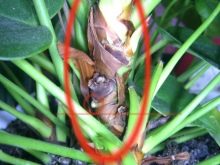
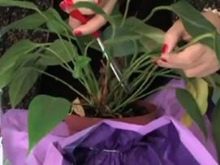

Reproduction
Anthurium can be grown from seed, by cuttings or by dividing the bush.
The first method is more complicated, since the plant must be pollinated to produce fruit. The berries ripen for 10 months, after which they are harvested and immediately planted.
- Initially, the seed must be removed from the fruit. For disinfection, keep in a weak manganese solution. Rinse.
- Prepare a pot of soil. Choose a soft and light soil.
- The seeds are planted using a toothpick as they are quite small. They are laid out on the surface and sprinkled with earth. Then you need to sprinkle them with distilled water from a spray bottle.
- The container is covered with foil and placed in a warm place. The temperature should be within 25 degrees.
- Occasionally, the greenhouse needs to be ventilated and sprayed with water.
- The first shoots will appear in two weeks.
- When 2-3 leaves are formed on the sprouts, they can be transplanted into separate containers. The soil is already necessary for adults.
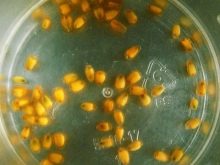

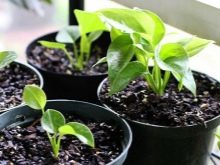
You can get seedlings by dividing an adult plant from the age of 4 years. In this case, several seedlings are allocated from one mother bush.
- When dividing, you need to ensure that each separated part has a rhizome with buds and leaves.
- To calm and disinfect the roots after separation, they are sprayed with "Fitosporin" and dried.
- Each seedling is planted in a separate pot, providing all the necessary conditions for effective growth. With proper care, full-fledged plants will grow from them.
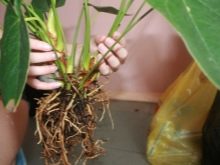

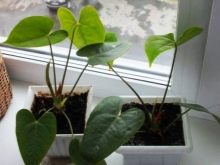
After transplanting, it is recommended to once again water the sprouts with Fitosporin solution, preventing diseases.
In most cases, anthurium is bred by cuttings.
- A healthy lateral process is selected first. The stem, which is above the ground, is cut off near the leaf. If he has no roots, then the procedure begins in the sand. You can use perlite.
- To create greenhouse conditions, the container with the handle is covered with a glass dome or foil. Then there will be enough moisture to grow roots.
- With their appearance, the seedlings are transplanted into a separate pot.
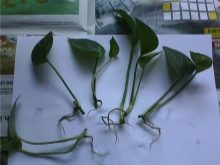


You can root not only the lateral, but also the upper cuttings. Simply put them in water at room temperature. And after the roots appear, transfer to a container with soil.
The flower can be easily propagated using aerial roots. It is enough to dig them in and create conditions conducive to rooting. After a while, you will get a full-fledged sprout.

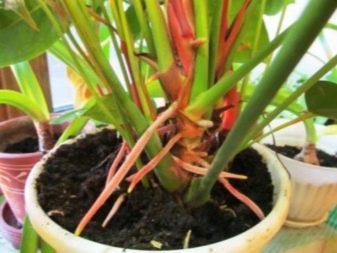
Pests and diseases
As a result of illiterate care, anthurium can get sick. Several types of pests parasitize on its green, succulent foliage.
- Aphid. It is characterized by a colonial distribution system. All individuals live on the seamy side of the leaf plate, so it is rather difficult to immediately notice them. The signs of her appearance are as follows:
- foliage is curled and discolored;
- the plant dries up;
- growth is slowing down.
To fix the problem, you will need insecticide treatment.
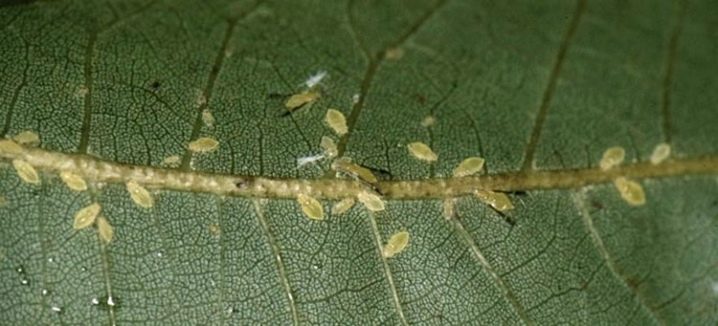
- Shields. The bugs are brownish-beige in color. Pests feed on juice. Signs of their appearance: on the outside, the leaves are covered with dark sticky spots, on the back side, brown tubercles are visible. As a result - slower growth and death of the plant. To destroy the parasites, you will have to resort to special treatment, ordinary insecticides are powerless here.
In specialized retail outlets, a systemic agent is purchased, after which the plant is treated with mineral oil.

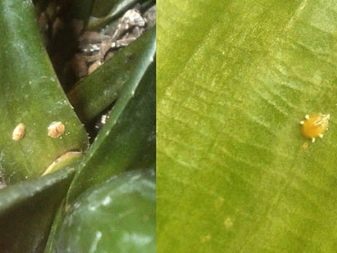
- Spider mites. Due to their diminutiveness, it is impossible to see them with the naked eye. But it is possible to determine the infection, since it is accompanied by the appearance of a cobweb. The foliage curls at the same time. The method of struggle is as follows: the leaves are washed with warm soapy water, then the flower is sprayed with acaricides.
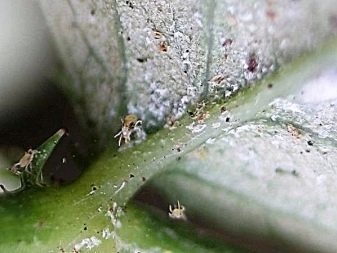
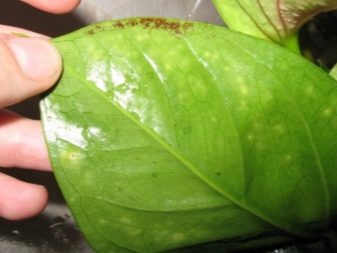
- Thrips. Flies are dangerous because they infect anthurium with viruses, and their secretions contribute to the appearance of fungal diseases. The foliage becomes yellowish-white. To combat them, you will need special tools, which are best purchased in the store.
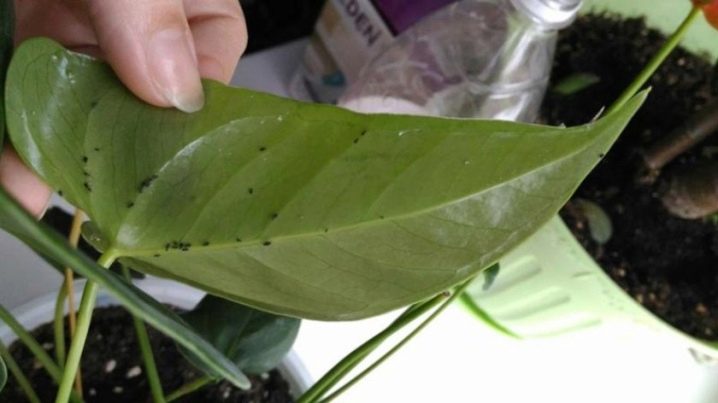
When parasites appear, you cannot hesitate, otherwise the plant will die or infect the neighboring ones.
Infections affect the appearance of the anthurium. According to them, you can determine the type of disease and its causes. Among the diseases, we will single out the most common ones.
- Fusarium - This is a fungus, the action of which is determined by withering and yellowing leaves, curvature of the stems. To protect the soil, it should be spilled with a fungicide, and the plant itself is treated with it.
- Anthracnose - also a fungal infection that causes drying of shoots and foliage. Kills a flower in a month, since its spread is fleeting. Brown spots with an accumulation of spores are clearly visible on the leaf blades. As a treatment, it is recommended to eliminate infected foliage and treat with copper sulfate, while watering is reduced.
- Septoria. Distinctive features - the appearance of spots of yellow and brown color, after which the leaves dry and fall off. In this case, quick help is needed.All affected areas are cut off, the soil and the ground part are sprayed with copper sulfate, and after some time, fungicide treatment is carried out.
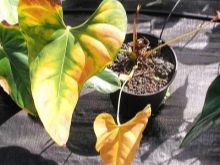
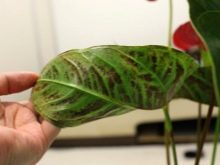
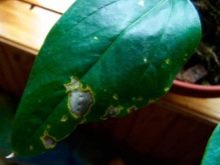
Do not forget that the appearance of parasites and infections can be prevented. It is enough to competently care for the plant.
Frequent mistakes
Very often, this indoor flower upsets its owners. It seems to them that all the conditions have been created for him, but he does not grow and does not bloom for a long time. To identify the problem, you need to analyze the existing factors again.
- The main mistake of florists is overflow. Assuming tropical plants need abundant watering, they moisturize the soil daily. Unfortunately, this procedure causes root rot. As a result, growth slows down and foliage turns yellow. To provide the flower with good moisture, it is better to place a container of water next to the pot. Drainage works well for excess water in the pot. Do not forget about it when transferring.
- Yellowed leaves may be due to too bright light. On burns, they turn brown. Exclude direct sunlight on the flower.
- If a flower is watered with tap water, then the reason is its hardness or temperature. The liquid should be soft and warm. Therefore, experts recommend that the water be defended. Then it acquires room temperature and the impurities settle, making it suitable for irrigation.
- If the room is cold, then brown spots will invariably appear on the flower, it will stop growing and blooming. Tropical plants need warmth, temperatures from 22 to 28 degrees are comfortable. This must be borne in mind when expecting abundant flowering. Only in winter, for a short time, the temperature regime drops to 19 degrees to allow the plant to rest and set buds. And then they return to summer conditions again. It is important to observe them.
- Slow growth can be caused by a lack or an overabundance of feeding. Remember that there are only two main periods for fertilization - spring and summer.
- If the very tips of the leaves dry out, this indicates a lack of moisture in the air.
- Sometimes, after transplanting a plant from one pot to another or after fertilizing, black spots suddenly appear over the entire surface of the leaf plates. More often this is caused by an excess of potassium in the soil. We'll have to transplant the plant to another land.
- To prevent the perianth from becoming covered with black spots, make sure that when spraying the leaves, water does not get on the bedspread and inflorescence.
- The tightness or, conversely, too large a pot volume is uncomfortable for the anthurium. He slows down the growth rate and stops blooming, because he will spend all his strength on filling the entire volume provided to him with roots.
- If you do not remove faded inflorescences, subsequent flowers will be small.
- It is possible that the root system was damaged during transplantation, so until the plant regains it, you can not wait for flowering. Experts warn about the accuracy of this procedure. It is better to transplant with an old earthen lump, you can only shake it off a little.
- By neglecting the drainage layer, owners run the risk of causing rhizome rot.

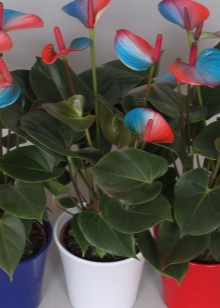
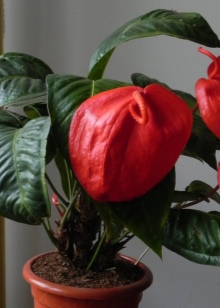
Anthurium is a house plant native to the rainforest. Therefore, it requires a special approach. If the owner creates all the necessary conditions for him, then he, in turn, will delight him with abundant flowering, delicate aroma and a riot of bright colors.
About anthurium: varieties, care and transplantation, see the next video.































The comment was sent successfully.